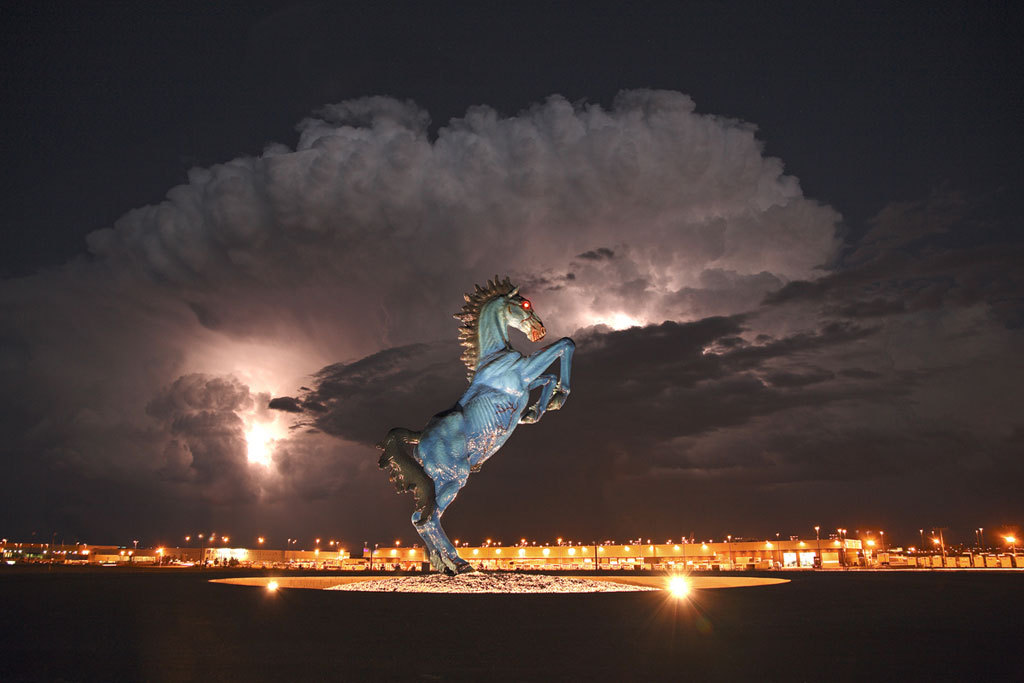Denver: Difference between revisions
Jump to navigation
Jump to search
| (62 intermediate revisions by the same user not shown) | |||
| Line 1: | Line 1: | ||
; | ;[[Western Alliance of Independent States]] -x- [[League of the Night]] | ||
[[File:Denver airport demon horse by night.jpg]] | [[File:Denver airport demon horse by night.jpg]] | ||
| Line 16: | Line 16: | ||
== '''History''' == | == '''History''' == | ||
'''Historical Note:''' ''Previous to the dates which follow, the Arapaho tribes had been using the junction of the South Platte river and Cherry Creek as a meeting place and seasonal camp for an unspecified period of time, but historical resources indicate that period of time could have been considerable, centuries or longer.'' | '''Historical Note:''' ''Previous to the dates which follow, the Arapaho tribes had been using the junction of the South Platte river and Cherry Creek as a meeting place and seasonal camp for an unspecified period of time, but historical resources indicate that period of time could have been considerable, centuries or longer.'' | ||
:''Its worth noting, that one of the specific references that I found, a letter dated 1858, stated that there were over three hundred lodges of Arapaho in and around that junction of the S.Platte and C.Creek rivers; this is important because a lodge is usually an extended family of several generations of Arapaho, which means at the time of the letter's writing, there were probably 3,000+ Arapaho tribal members in residence at the site of downtown Denver. In the year 2001, there are less than 10,000 total Arapaho tribal members split between the two surviving tribal groups left in North America. Time has not been kind to the Arapaho.'' | :''Its worth noting, that one of the specific references that I found, a letter dated 1858, stated that there were over three hundred lodges of Arapaho in and around that junction of the S.Platte and C.Creek rivers; this is important because a lodge is usually an extended family of several generations of Arapaho, which means at the time of the letter's writing, there were probably 3,000+ Arapaho tribal members in residence at the site of downtown Denver. In the year 2001, there are less than 10,000 total Arapaho tribal members split between the two surviving tribal groups left in North America. Time has not been kind to the Arapaho.'' -- Bruce E. Zieger (mortal amateur historian and storyteller) | ||
* -- [[The Timeline of Denver]] | |||
* -- [[Notable Historical People of Denver]] | |||
== '''Location''' == | == '''Location''' == | ||
| Line 401: | Line 38: | ||
== '''Attractions''' == | == '''Attractions''' == | ||
* -- [[Events in Denver]] | |||
== '''Bars and Clubs''' == | == '''Bars and Clubs''' == | ||
| Line 408: | Line 46: | ||
== '''Cemeteries''' == | == '''Cemeteries''' == | ||
* -- | * -- [[Fairmount Cemetery]] | ||
== '''City Government''' == | == '''City Government''' == | ||
| Line 456: | Line 94: | ||
== '''Transportation''' == | == '''Transportation''' == | ||
== <span style="color:maroon;">'''Vampires of Denver''' == | == <span style="color:maroon;">'''Vampires of Denver''' (18) == | ||
=== [[File:Brujah clan logo.png]] <span style="color:maroon;"> Brujah === | === [[File:Brujah clan logo.png]] <span style="color:maroon;"> Brujah (1) === | ||
*<span style="color:maroon;"> -- [[Flaevius Nellson]] -- The Buffalo Soldier. | |||
---- | ---- | ||
<br> | <br> | ||
<br> | <br> | ||
---- | ---- | ||
<span style="color: | === [[File:Caitiff clan logo.png]] <span style="color:maroon;"> Caitiff === | ||
---- | ---- | ||
<br> | <br> | ||
<br> | <br> | ||
---- | ---- | ||
=== [[File: | |||
=== [[File:Gangrel clan logo.png]] <span style="color:maroon;"> Gangrel (4) === | |||
* -- [[Rachel Lukianova Fedorov]] -- Russian Gangrel Countess and Primogen. | |||
* -- [[Grayson Fallow]] -- Eldest progeny of Countess Rachel. | |||
* -- [[Burning Crow]] -- Progeny of Grayson Fallow and Guardian of the Arapaho. | |||
* -- [[Kate O'Malley]] -- Progeny of Grayson Fallow and Gangrel Lady of the Night. | |||
* -- [[ | |||
---- | ---- | ||
<br> | <br> | ||
<br> | <br> | ||
---- | ---- | ||
=== | |||
=== [[File:Lasombra clan logo.png]] <span style="color:maroon;"> Lasombra (5) === | |||
*<span style="color:maroon;"> -- [[Don Alonzo De Vargas]] -- Lasombra antitribu Primogen. | |||
*<span style="color:maroon;"> -- [[Don Leandro Adon Oro Christian De Reyes]] -- Eldest Childe of Don Alonzo & Pilgrim on the Bitter Journey | |||
<span style="color: | *<span style="color:maroon;"> -- [[Don Ramon Arturo Negro De Cadiz]] -- Second Son & Art Aficionado | ||
<span style="color: | *<span style="color:maroon;"> -- [[Dona Isabella Baboa Garcia Mendez]] -- The Pious Daughter | ||
<span style="color: | *<span style="color:maroon;"> -- [[Loleta]] -- Daughter of Don Ramon Arturo Negro De Cadiz | ||
<span style="color: | |||
---- | ---- | ||
<br> | <br> | ||
<br> | <br> | ||
---- | ---- | ||
=== [[File:Malkavian clan logo.png]] <span style="color:#800000;"><u>'''Clan Malkavian'''</u> (2) === | |||
*<span style="color:maroon;"> -- Antonio -- Primogen of Lunatics | |||
*<span style="color:maroon;"> -- Jason Dodgerson -- The Reincarnate | |||
=== [[File:Malkavian clan logo.png]] <span style="color:#800000;"><u>'''Clan Malkavian'''</u> === | |||
---- | |||
---- | |||
---- | ---- | ||
<br> | <br> | ||
| Line 591: | Line 139: | ||
=== [[File:Nosferatu clan logo.png]] <span style="color:#800000;"><u>'''Clan Nosferatu'''</u> === | === [[File:Nosferatu clan logo.png]] <span style="color:#800000;"><u>'''Clan Nosferatu'''</u> === | ||
---- | ---- | ||
<br> | <br> | ||
<br> | <br> | ||
---- | ---- | ||
=== | |||
=== [[File:Toreador clan logo.png]] <span style="color:#800000;"><u>'''Clan Toreador'''</u> (3) === | |||
*<span style="color:maroon;"> -- [[Edward Williamson]] -- The Prince. | |||
*<span style="color:maroon;"> -- [[Leslie Wilkes]] | |||
<span style="color:# | *<span style="color:maroon;"> -- [[Leslie Booth]] | ||
<span style="color: | |||
<span style="color: | |||
<span style="color: | |||
---- | ---- | ||
<br> | <br> | ||
| Line 628: | Line 154: | ||
---- | ---- | ||
=== [[File: | === [[File:Tremere clan logo.png]] <span style="color:#800000;"><u>'''Clan Tremere'''</u> (1) === | ||
*<span style="color:maroon;"> -- [[Gideon Londoner]] -- Regent of Denver | |||
* | |||
---- | ---- | ||
<br> | <br> | ||
| Line 666: | Line 161: | ||
---- | ---- | ||
=== [[File: | === [[File:Ventrue clan logo.png]] <span style="color:#800000;"><u>'''Clan Ventrue'''</u> (2) === | ||
*<span style="color:maroon;"> -- Elgin Fitz-Cairn | |||
---- | ---- | ||
<br> | <br> | ||
| Line 682: | Line 168: | ||
---- | ---- | ||
=== [[ | === <span style="color:#800000;"> Bloodlines === | ||
*<span style="color:maroon;"> -- [[Mary Wyncott]] -- Ventrue (Salubri) Philanthropist & Humanitarian. | |||
*<span style="color:maroon;"> -- [[Chelsea Etitameh]] <span style="color:#800000;"> -- Progeny of Qadim Malikh. | |||
---- | ---- | ||
<br> | <br> | ||
<br> | <br> | ||
---- | ---- | ||
=== [[File:Deceased vampire icon.png]] <span style="color:#800000;"><u>'''Deceased and Exiled vampires of Denver'''</u> === | === [[File:Deceased vampire icon.png]] <span style="color:#800000;"><u>'''Deceased and Exiled vampires of Denver'''</u> === | ||
*<span style="color:maroon;"> -- [[Thaddeus]] -- Insane Methusaleh. {Exiled & Hunted} | |||
*<span style="color:maroon;"> -- [[Jacob Prestor]] -- Caitiff Mad Scientist. {Deceased} | |||
*<span style="color:maroon;"> -- [[Karen Mauve]] -- Youngest progeny of the Prince and Rockstar Wannabe. {Deceased} | |||
<span style="color: | |||
---- | ---- | ||
<br> | <br> | ||
Latest revision as of 05:28, 20 February 2015
City Seal of Denver
Quote
Denver is a city that will be far more defined by its future than its past. -- John Hickenlooper
Appearance
Climate
Economy
History
Historical Note: Previous to the dates which follow, the Arapaho tribes had been using the junction of the South Platte river and Cherry Creek as a meeting place and seasonal camp for an unspecified period of time, but historical resources indicate that period of time could have been considerable, centuries or longer.
- Its worth noting, that one of the specific references that I found, a letter dated 1858, stated that there were over three hundred lodges of Arapaho in and around that junction of the S.Platte and C.Creek rivers; this is important because a lodge is usually an extended family of several generations of Arapaho, which means at the time of the letter's writing, there were probably 3,000+ Arapaho tribal members in residence at the site of downtown Denver. In the year 2001, there are less than 10,000 total Arapaho tribal members split between the two surviving tribal groups left in North America. Time has not been kind to the Arapaho. -- Bruce E. Zieger (mortal amateur historian and storyteller)
Location
Population
- -- City (649,495) - 2013 census
- -- Urban (2,374,203) - 2013 census
- -- Metro Area (2,697,476) - 2013 census
Arenas
Attractions
Bars and Clubs
Castles
- -- Castle Marne
Cemeteries
City Government
Churches
Crime
Citizens of the City
Current Events
Galleries
Hospitals
Hotels & Hostels
Supermarkets
Landmarks
Maps
Monasteries
Monuments
Museums
Neighborhoods
Parks
Private Residences
Restaurants
Ruins
Schools
Shops
Theatres
Transportation
Vampires of Denver (18)
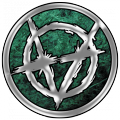 Brujah (1)
Brujah (1)
- -- Flaevius Nellson -- The Buffalo Soldier.
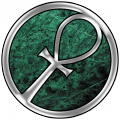 Caitiff
Caitiff
 Gangrel (4)
Gangrel (4)
- -- Rachel Lukianova Fedorov -- Russian Gangrel Countess and Primogen.
- -- Grayson Fallow -- Eldest progeny of Countess Rachel.
- -- Burning Crow -- Progeny of Grayson Fallow and Guardian of the Arapaho.
- -- Kate O'Malley -- Progeny of Grayson Fallow and Gangrel Lady of the Night.
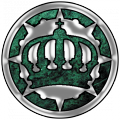 Lasombra (5)
Lasombra (5)
- -- Don Alonzo De Vargas -- Lasombra antitribu Primogen.
- -- Don Leandro Adon Oro Christian De Reyes -- Eldest Childe of Don Alonzo & Pilgrim on the Bitter Journey
- -- Don Ramon Arturo Negro De Cadiz -- Second Son & Art Aficionado
- -- Dona Isabella Baboa Garcia Mendez -- The Pious Daughter
- -- Loleta -- Daughter of Don Ramon Arturo Negro De Cadiz
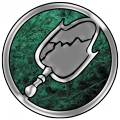 Clan Malkavian (2)
Clan Malkavian (2)
- -- Antonio -- Primogen of Lunatics
- -- Jason Dodgerson -- The Reincarnate
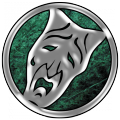 Clan Nosferatu
Clan Nosferatu
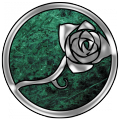 Clan Toreador (3)
Clan Toreador (3)
- -- Edward Williamson -- The Prince.
- -- Leslie Wilkes
- -- Leslie Booth
 Clan Tremere (1)
Clan Tremere (1)
- -- Gideon Londoner -- Regent of Denver
 Clan Ventrue (2)
Clan Ventrue (2)
- -- Elgin Fitz-Cairn
Bloodlines
- -- Mary Wyncott -- Ventrue (Salubri) Philanthropist & Humanitarian.
- -- Chelsea Etitameh -- Progeny of Qadim Malikh.
 Deceased and Exiled vampires of Denver
Deceased and Exiled vampires of Denver
- -- Thaddeus -- Insane Methusaleh. {Exiled & Hunted}
- -- Jacob Prestor -- Caitiff Mad Scientist. {Deceased}
- -- Karen Mauve -- Youngest progeny of the Prince and Rockstar Wannabe. {Deceased}
Websites
